Battery Irrigation Trends for Smart Gardens
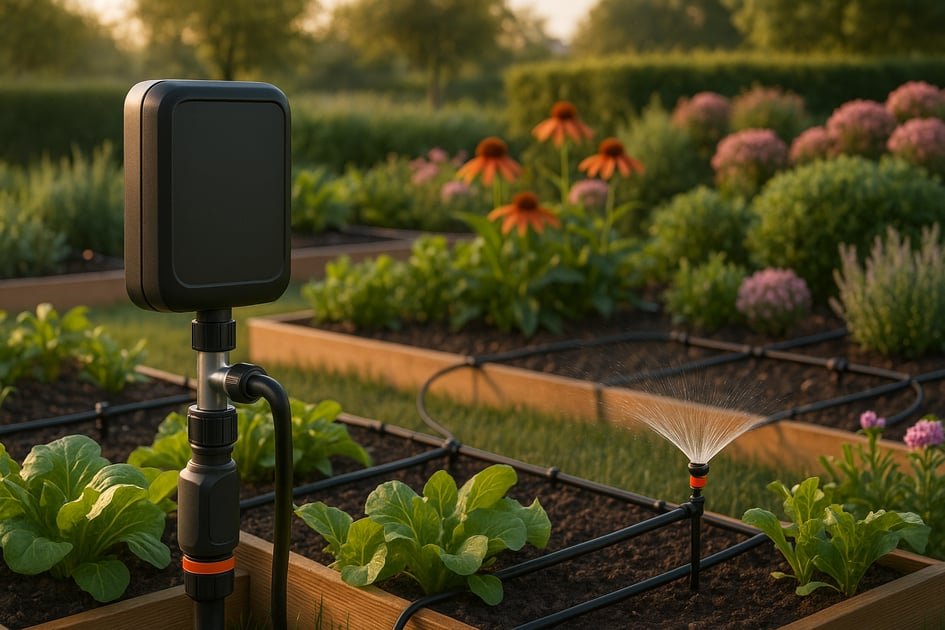
Battery-powered irrigation systems are transforming home gardening by offering automated, wire-free watering solutions that save time and conserve water. These systems use lithium-ion batteries, often paired with solar charging, and integrate smart features like weather-based scheduling, soil moisture sensors, and app controls. They are ideal for gardens of all sizes, providing precision watering tailored to plant needs while reducing waste.
Key advancements include:
- Hybrid power setups: Combining batteries with solar panels for consistent energy.
- Smart controls: Adjusting watering schedules based on weather and soil data.
- Modular designs: Allowing easy scalability and flexibility for various garden layouts.
- App integration: Offering real-time monitoring and customization.
These systems cater to eco-conscious homeowners seeking convenience and efficiency. By integrating with tools like AIGardenPlanner, gardeners can optimize water use and improve plant health through data-driven insights. Whether for small container gardens or large landscapes, battery-powered irrigation is a practical choice for modern gardening needs.
Wireless Irrigation Featuring the RainPoint Smart+ Garden Watering System
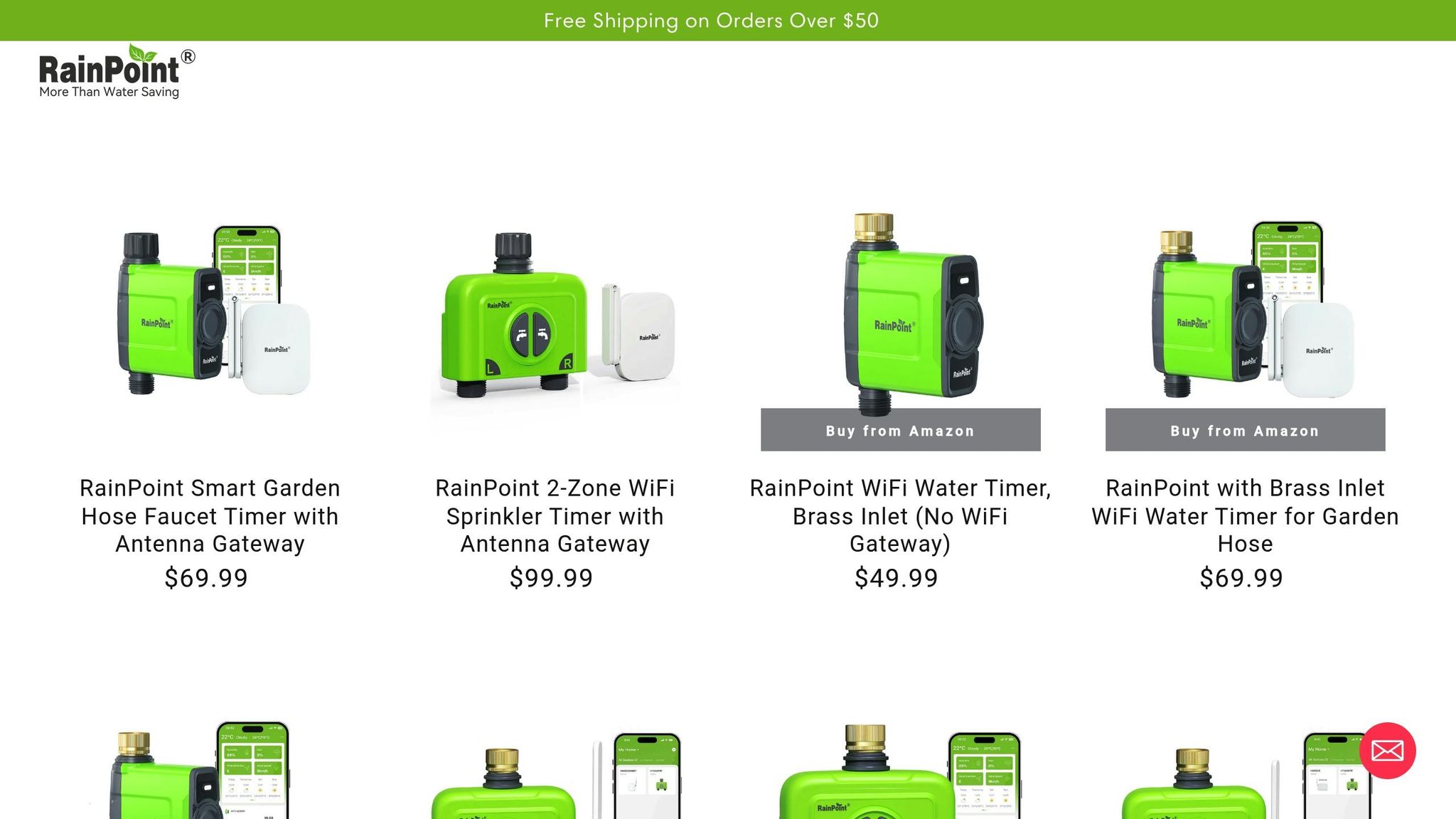

Recent Advances in Battery-Powered Irrigation
The world of battery-powered irrigation has come a long way, evolving from simple timer-based systems to advanced water management solutions. These improvements focus on making systems more energy-efficient, smarter, and better suited for modern gardens. By building on basic automation, these innovations bring more precision and flexibility to irrigation.
Hybrid Battery Solutions
Solar-hybrid systems combine lithium-ion batteries with solar panels, creating a self-sustaining power source that works automatically.
Modern hybrid setups often include intelligent power switching, which alternates between solar energy and battery power depending on sunlight availability. Some even feature dual-battery configurations: a primary battery handles daily operations, while a backup ensures consistent watering during cloudy or low-light periods.
Smarter Watering Features
Weather-adaptive scheduling connects to local weather data, adjusting watering based on conditions like rainfall, humidity, and temperature. This ensures plants get the right amount of water - less during rainy spells and more during hot, dry days.
Multi-zone sensors now measure soil moisture at different depths, enabling precise watering for specific areas of the garden. This eliminates the one-size-fits-all approach and caters to the unique needs of each zone.
App-based controls provide real-time updates, including system status, battery levels, and water usage analytics. Some apps even offer insights into plant health, making it easier to manage your garden.
Machine learning takes things a step further by analyzing past watering patterns to improve future schedules. When paired with tools like AIGardenPlanner, these systems can tap into plant databases to create customized watering plans based on the specific needs of various plants and their growth stages.
Modular Systems for Any Garden Size
As smart controls enhance watering precision, modular designs make it possible to scale these systems for gardens big and small.
Scalable hub-and-node architectures use wireless mesh networking to cover gardens of any size or layout. A central hub manages multiple watering zones, with each zone operating independently based on its unique requirements. This setup allows for easy expansion without the need to replace the entire system.
Interchangeable watering modules and quick-connect fittings let gardeners switch between drip irrigation, micro-sprinklers, or soaker hoses. This flexibility simplifies adjustments for different plants or seasonal changes.
Portable base stations are perfect for container gardens, allowing for easy repositioning during different seasons. These setups are especially handy for balcony gardens, greenhouses, or remote areas with limited access to centralized water sources.
Even battery options are modular. Gardeners can choose from various battery sizes to match their setup. Larger gardens may need high-capacity batteries, while smaller spaces can rely on compact units designed to last longer on a single charge.
Key Components of Modern Battery Irrigation Systems
The evolution of smart irrigation systems owes much to advancements in their core components. For gardeners, understanding these features can help in selecting systems that align with their specific needs. These battery-powered systems combine efficient energy use, intelligent controls, and easy-to-use interfaces to ensure reliable and optimized watering.
Battery Life and Management
Lithium-ion batteries power most modern irrigation systems, and their efficient management is crucial for smooth operation. Battery management systems (BMS) play a key role by monitoring charge levels and regulating power usage to maximize battery life. Solar panels are increasingly popular as a backup or primary charging source. For example, pairing dual 100-watt solar panels with battery storage can provide reliable energy, even during overcast days, ensuring uninterrupted operation[1][2]. While battery costs are a significant part of the initial setup, periodic replacements are necessary over time[1].
Smart Controllers and Sensors
Smart controllers act as the system's brain, merging real-time weather data with soil moisture readings to fine-tune watering schedules. These controllers can automatically adjust for conditions like rain or heat, reducing water waste and ensuring plants get what they need. Multi-depth soil sensors further enhance precision by measuring moisture levels at various root zones, ensuring water reaches the areas that need it most.
To conserve energy, these systems use low-power components, which extend battery life while still enabling advanced features like dynamic scheduling[1][2]. Some controllers even utilize machine learning to analyze historical data, predict future irrigation needs, and optimize watering patterns based on specific crop requirements[3].
User-Friendly Interfaces
Modern systems prioritize ease of use, often offering mobile apps with real-time updates on battery levels, water usage, and system status. These apps typically include drag-and-drop scheduling tools, making them accessible even for those unfamiliar with technology. For added convenience, programmable timers and backlit displays with clearly labeled buttons provide manual control when mobile access isn’t available.
Many systems also integrate with smart home ecosystems, allowing users to sync irrigation schedules with broader automation routines. For instance, users can adjust watering schedules during vacations or coordinate them with outdoor lighting systems. On-device visual indicators, such as LED lights or small LCD screens, offer quick insights into system status and battery health, making troubleshooting straightforward. Some systems even include planning tools, helping gardeners align watering with their specific landscaping needs.
sbb-itb-4d6a8dd
🚀 Ready to Reinvent Your Garden?
Join thousands of homeowners who have transformed their gardens using our AI design tool. Upload one photo to explore endless possibilities.
Get your AI garden designs →Comparing Top Battery-Powered Irrigation Systems
When it comes to choosing a battery-powered irrigation system, understanding how specific features impact performance can make all the difference. These systems vary in several key areas, including:
- Battery life and management: How long the system runs before needing a recharge or battery replacement.
- Coverage capacity: The size of the area the system can effectively water.
- Smart scheduling: The ability to automate watering schedules based on time or environmental conditions.
- Ease of installation: How simple it is to set up and start using the system.
- Cost: The price range and value offered for the features included.
Some systems are designed for smaller spaces, like container gardens, and focus on simplicity, low-maintenance operation, and efficient use of alternative water sources. On the other hand, there are options tailored for larger gardens that incorporate advanced features like soil monitoring, automated adjustments, and remote control capabilities.
The best system for you will depend on factors like the size of your garden, your budget, the type of water source you’re working with, and how much you value smart connectivity or low-maintenance operation. By carefully weighing these elements, you can find a solution that aligns with your gardening needs and priorities.
Consumer Trends and User Preferences
The battery-powered irrigation market in the United States is evolving, driven by homeowners prioritizing convenience, sustainability, and smart technology in their gardening routines. These preferences are shaping both standard features and emerging trends, with a clear focus on usability and tailored control.
Ease of Use and Eco-Friendliness
Consumers increasingly expect irrigation systems to be simple and ready to use right out of the box. Systems with intuitive controls and straightforward installation are highly sought after, as they eliminate the need for complex setup or permanent wiring.
Eco-conscious buyers also favor systems that reduce energy consumption. Rechargeable lithium batteries, often paired with solar charging capabilities, are becoming a popular choice. Additionally, water conservation is a key priority, especially in regions like California and the Southwest, where drought conditions are common. Features like moisture sensors that prevent overwatering and weather-based scheduling that adjusts to rainfall forecasts are particularly appealing. These advancements not only support environmental goals but also help reduce water bills.
Personalization and Remote Monitoring
As gardening practices become more refined, users are demanding greater personalization in irrigation systems. Remote control capabilities, customizable multi-zone scheduling, and real-time notifications for system status and battery levels are becoming standard expectations.
Customizable watering schedules are especially important for gardeners managing a variety of plants with different water needs. Systems that allow users to create multiple watering zones with independent schedules are replacing the outdated one-size-fits-all approach. This shift reflects a growing interest in more precise and efficient gardening techniques.
For tech-savvy gardeners, data tracking and historical reporting features are also gaining traction. These tools provide insights into water usage patterns, seasonal adjustments, and plant health trends, enabling users to fine-tune their irrigation practices for better results.
Integration with AI Garden Design Tools
The integration of irrigation systems with AI-powered platforms like AIGardenPlanner is transforming how people approach garden design. These tools offer personalized plant recommendations and strategies for optimizing water efficiency.
For instance, when users upload photos of their gardens to AIGardenPlanner, the platform analyzes the layout and suggests ideal plant placements to maximize water use. It also recommends plants suited to specific climate zones and local growing conditions, helping gardeners choose varieties that thrive with minimal water input. Whether designing a drought-tolerant Mediterranean garden or a water-intensive cottage-style landscape, these tools provide tailored irrigation strategies.
AIGardenPlanner also offers detailed growing guides, which complement battery-powered irrigation systems by providing watering recommendations specific to various plant types. This allows users to confidently program their irrigation schedules, knowing they align with expert horticultural advice. Additionally, location-based plant suggestions ensure that gardens are designed to work efficiently with battery-powered systems, maximizing water conservation while supporting healthy plant growth.
Conclusion and Key Takeaways
Battery-powered irrigation systems have evolved into highly efficient and precise tools for garden care, offering smarter and more environmentally conscious solutions. The move toward hybrid power sources, modular designs, and AI-driven features reflects a shift in how Americans approach garden management.
One notable advancement is the rise of eco-friendly automation. Modern systems now incorporate smart sensors and weather-based scheduling to conserve both energy and water, addressing concerns about resource efficiency.
Personalization has also become a cornerstone of these systems. Features like multi-zone scheduling, remote monitoring, and real-time notifications have shifted expectations - generic setups are being replaced by tailored solutions that adapt to specific plant and environmental needs. This trend opens the door to even more advanced integrations that simplify and enhance garden maintenance.
AI-powered tools, such as AIGardenPlanner, take this personalization a step further. By allowing users to upload photos of their gardens, these platforms provide customized plant recommendations and detailed design guidelines. This helps gardeners create layouts that not only improve plant health but also optimize water usage.
For homeowners, the best systems combine ease of use with advanced functionality. Intuitive controls, extended battery life, and seamless compatibility with garden planning tools make automated irrigation more convenient. At the same time, these features contribute to lower water bills and healthier, thriving plants.
With ongoing improvements in battery technology and AI integration, precision gardening is becoming more accessible, empowering everyone to manage their gardens with greater efficiency and care.
FAQs
How do battery-powered irrigation systems work with AI tools like AIGardenPlanner to improve garden care?
Battery-powered irrigation systems work hand-in-hand with AI tools like AIGardenPlanner to make gardens smarter and easier to maintain. These systems rely on real-time data - like soil moisture, temperature, and humidity - to automatically adjust watering schedules. The result? Plants get exactly the water they need, when they need it, cutting down on waste while promoting healthier growth.
Meanwhile, AIGardenPlanner takes things a step further by offering tailored garden design and plant placement suggestions. By combining these irrigation systems with layouts designed for specific plant needs, gardeners can achieve a more efficient, hassle-free approach to nurturing their plants.
What are the advantages of using a hybrid battery system with solar panels for garden irrigation?
A hybrid battery system combined with solar panels brings multiple advantages to garden irrigation. By storing surplus solar energy, it guarantees your irrigation system keeps working seamlessly, even during the night or on cloudy days, ensuring your plants get the water they need without interruptions.
This approach also cuts down on dependence on grid power and fossil fuels, which helps reduce energy costs and lessens the impact on the environment. It's an efficient and eco-conscious way to boost the reliability of your smart garden while supporting greener practices.
How do modular irrigation systems adapt to different garden sizes and layouts?
Modular irrigation systems offer a flexible and customizable solution for gardens of all shapes and sizes. Whether you're working with a compact backyard or a sprawling landscape, these systems can be adjusted to fit your specific layout. Their components are designed to be rearranged or expanded, ensuring efficient watering that suits your garden's unique dimensions.
This flexibility means you can easily scale your setup as your garden evolves, maintaining consistent water coverage without the hassle of replacing the entire system. No matter if your garden is square, rectangular, or has an irregular layout, modular irrigation systems are a practical way to keep everything well-watered and thriving.
🎨 Visualize Your Dream Garden Today!
Transform any outdoor space into a professional landscape design in minutes. Just upload a photo, choose your style, and let our AI do the rest.
Start your garden transformation now →Related posts
Related Articles
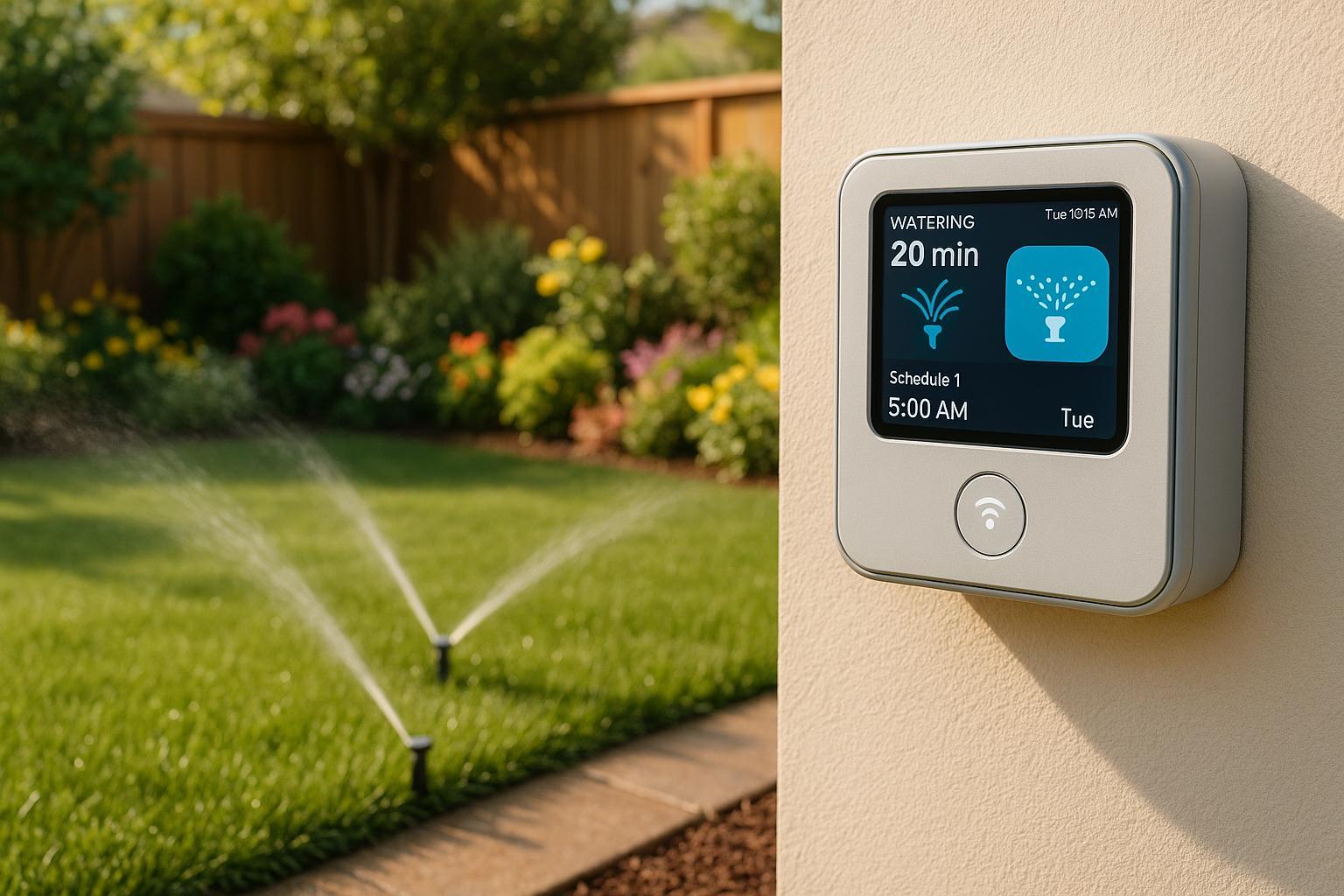
How To Upgrade Sprinkler Timers To Smart Controllers
Upgrade your sprinkler system to a smart controller for efficient irrigation, reduced water waste, and remote management.
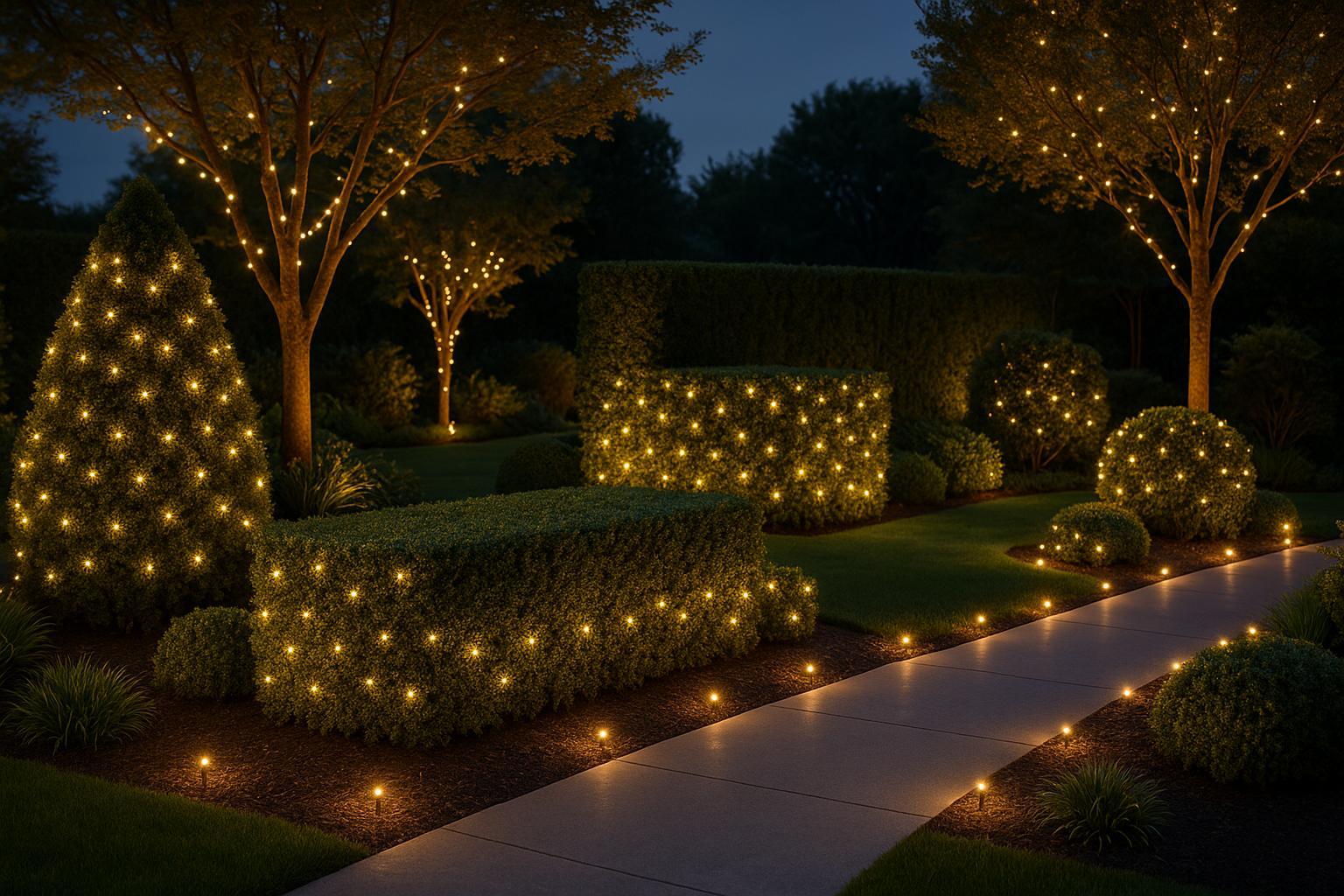
AI Holiday Lighting for Landscapers
Explore how AI is revolutionizing holiday lighting for landscapers, enhancing design efficiency, customization, and client satisfaction.
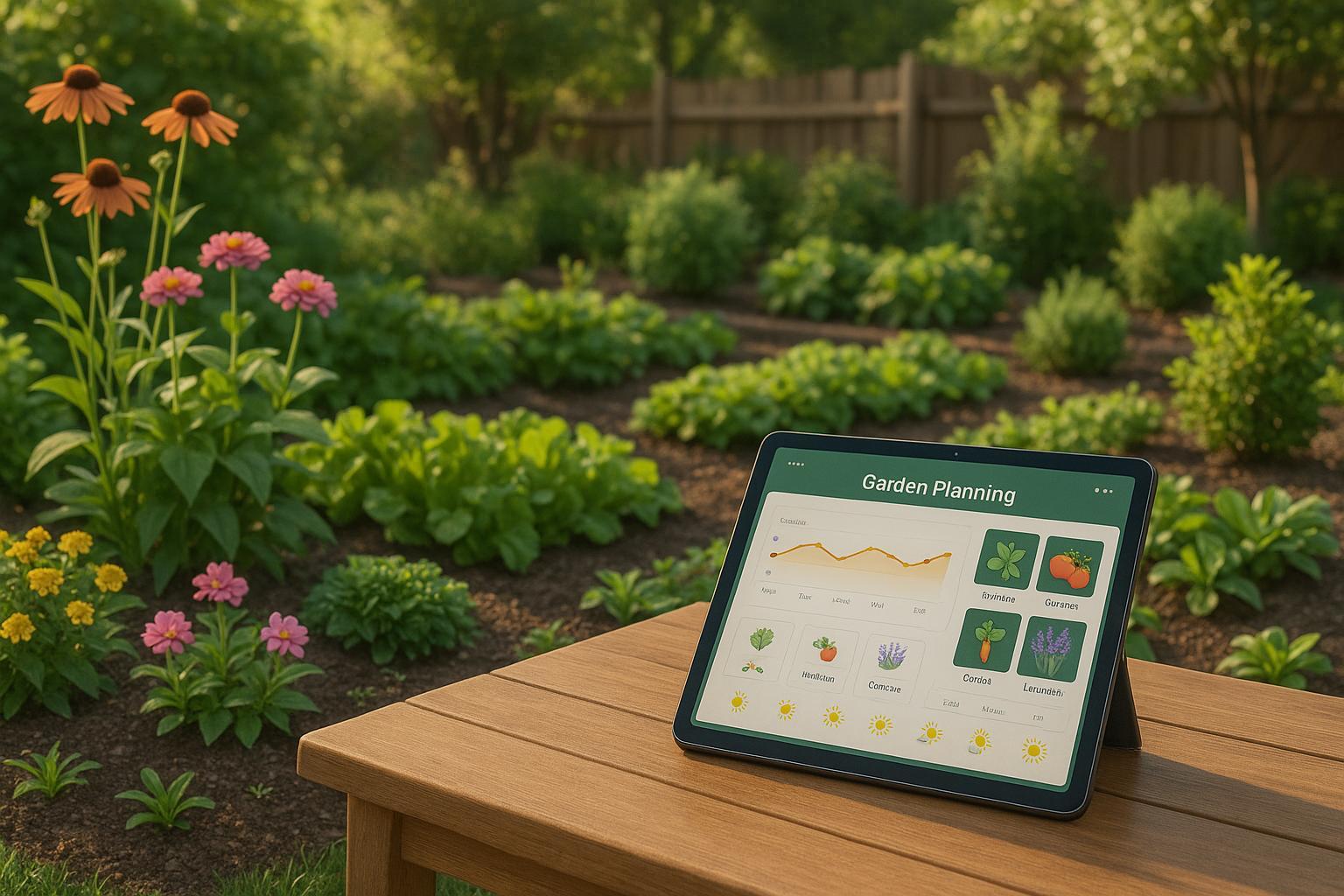
AI Climate Data for Garden Planning
Explore how AI tools transform garden planning with tailored plant recommendations, weather insights, and sustainable designs for thriving ecosystems.

Revolutionizing Gardening: The Impact of AI Technology on Plant Care
Explore the benefits of using AI technology in gardening to enhance plant health, automate tasks, and optimize garden management. Discover the future trends shaping the AI gardening landscape.
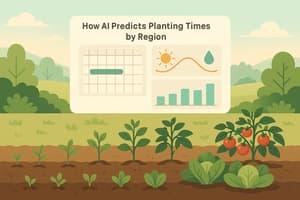
How AI Predicts Planting Times by Region
AI tools provide personalized planting schedules based on local climate data, enhancing gardening efficiency and plant survival rates.

Solar Lighting and Wildlife-Friendly Gardens
Learn how solar lighting enhances garden beauty while protecting wildlife, minimizing light pollution, and supporting local ecosystems.